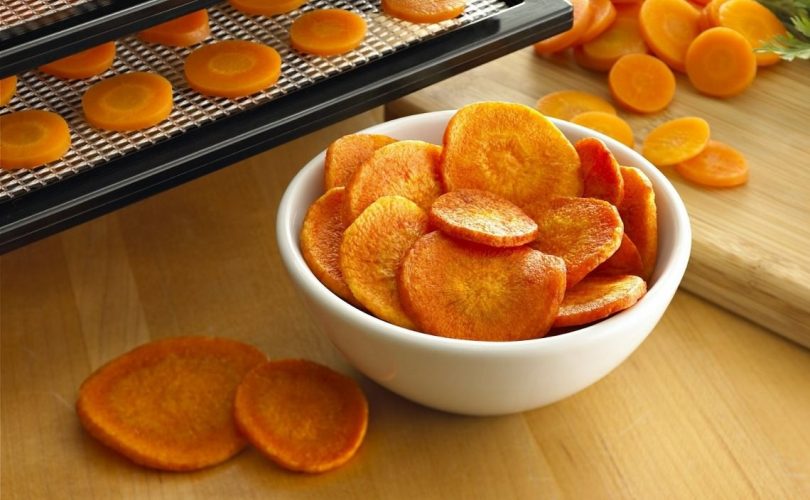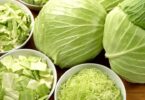An effective way to prolong the shelf life of carrots is by dehydrating them. But, commercially dehydrated products can be costly.
Luckily, there are numerous ways of dehydrating carrots at home.
READ ALSO: 10 Amazing Benefits of Dehydrating Food
How to Dehydrate Carrots at Home
Using a food dehydrator
A food dehydrator is a machine that helps preserve food by removing its moisture. Here are the steps on dehydrating carrots using a food dehydrator.
- Remove the carrots’ greens and ends. Using a vegetable brush, scrub the carrots until they’re free from dirt.
- Peel the carrots. You will end up with slightly bitter dehydrated carrots if you don’t peel them.
- Slice the carrots into ¼-inch circles. Thinner slices may fall through some dehydrator trays’ ventilation holes. Thicker slices would take longer to dry.
- Blanch the carrot slices using a steamer of boiling water for 2 minutes. This will retain the carrots’ orange color. It’ll also be quicker to rehydrate the carrots when they’re blanched.
- After 2 minutes of blanching, drop the slices into ice water immediately. You can also run cold water of the slices until they no longer feel warm.
- Arrange the slices on the dehydrator trays. Make sure that no slices are touching each other.
- Set the food dehydrator’s temperature to 135°F or 125°F. Place the trays in the dehydrator and dry the carrots until they’re completely dry. This may take up to 10 hours. The dehydrating time will depend on the air’s humidity and the thickness of the slices.
- Once the slices are crispy dry, turn off the food dehydrator and leave the carrots to cool at room temperature.
- Transfer the carrots in storage containers, preferably mason jars.
PROS:
- May improve the carrot’s taste
- Easy-to-use because the airflow and temperature are well-controlled
- Dehydrate a large number of carrots in a single batch
CONS:
- May take extra space in your kitchen
- Expensive
- Can be quite noisy since the fans will continuously run when in use
READ ALSO: Which Food Dehydrator is Right for You
Using an oven to dehydrate carrots
For households without food dehydrators, you may use an oven to dehydrate carrots.
The process of dehydrating with an oven is very similar to using a food dehydrator (See the steps for dehydrating using a food dehydrator). The only difference is the duration of the process.
- Set the oven’s temperature to 135°F or 125°F. If your oven doesn’t go lower than 150°F, set the oven to the lowest temperature possible.
- Roll up a dish towel and use it to prop the oven door open. This will prevent the carrots from roasting.
- This may take 6 to 8 hours, but it’s best to constantly check on the carrots to make sure they’re not roasted.
PROS:
- Most households already have an oven
- Less expensive than a dehydrator
CONS:
- Less efficient than dehydrators
- Difficult to keep constant airflow and temperature which may lead to low-quality dehydrated products
Using a microwave to dehydrate carrots
If you don’t have a dehydrator and an oven, you can also use a microwave oven.
- Prepare the carrots before the dehydration process (see first steps for dehydrating carrots using a food dehydrator).
- Spray non-stick cooking spray on some wax paper sheets. Then, place the carrot slices on the sheets.
- Put the wax paper with the slices in the microwave. Set it to medium power at 10 minutes.
- After 10 minutes, turn the slices over. Set the microwave to low power and dry the slices for another 15 minutes.
- If you have an oven, you may use it to dry the slices for 20 minutes at 200°F. This will make the slices crispier. But if you’re already satisfied with the dryness from the microwave, you can skip this step.
- Let the carrots cool at room temperature before placing them into storage containers.
PROS:
- Can dehydrate foods faster than food dehydrators and ovens
- Most households already have a microwave oven
- Cheaper compared to other kitchen equipment
CONS:
- Can only dehydrate food in small batches
- Controls also vary depending on the brand and model, so you may need to experiment with your microwave first
- May pose health and safety risks
Sun drying and air drying carrots
If you don’t have any kitchen equipment available for dehydrating, you can also use the sun drying or air-drying methods to dehydrate carrots.
- Clean the carrots to make sure that they’re free from dirt.
- Cut the carrots into small, uniform pieces. You may want to make the slices really small since this method will take days to finish. Grating them may be the best option.
- Blanch and shock the carrots (See steps d-e for dehydrating using a food dehydrator).
- Lay the carrots onto baking pans and cover them with a cheesecloth. This will prevent pests from contaminating them.
- Place the baking pans under direct sunlight (sun drying) or leave them in a well-ventilated room (air drying).
- Drying using these methods can take several days, so check on the carrots from time to time.
- Once the carrots have dried up completely, store or package them properly.
PROS:
- Both methods won’t cost you any money
- Don’t affect the carrots’ taste, color, and nutritional value
- Simple methods that anybody can do
CONS:
- Requires several days to dehydrate carrots
- Places with high humidity can’t do this method because it can cause the molds to grow on carrots
- You need to keep a close eye on the drying process
Storing dehydrated carrots
Dehydrating carrots will already extend their shelf life. Storing them properly will make them last even longer.
Here are the essentials in storing your dehydrated carrots:
- After the dehydration process, let the carrots completely cool down before storing them.
- Choose a high-quality airtight container for your carrots. You may also vacuum seal them in small batches. This will ensure that not all of your carrots will be wasted due to contamination.
- Store the carrots in a dark and cool place. The ideal storage temperature would be 60°F or less. Exposing dehydrated carrots to direct light and heat will shorten the shelf life of your carrots. It may also make the carrots lose their vitamin A content.
- Observe for water condensation inside freshly packaged dehydrated carrots. If you spot any water, it means that they need more time to dry. To avoid this, make sure that your carrots are completely free from moisture before storing.
- Label the package with the date when it was processed.
Using dehydrated carrots
Dehydrated carrots are more convenient and easier to use for cooking. They’re ready-to-use so you won’t need extra time cutting up carrots especially when you’re cooking a lot of dishes.
Dehydrating doesn’t remove the carrots’ nutritional value. Doing the process properly may retain the carrots’ orange color and natural flavor.
You can use dehydrated carrots for any dish where you would use fresh carrots such as casseroles, omelets, bread, and soups.





